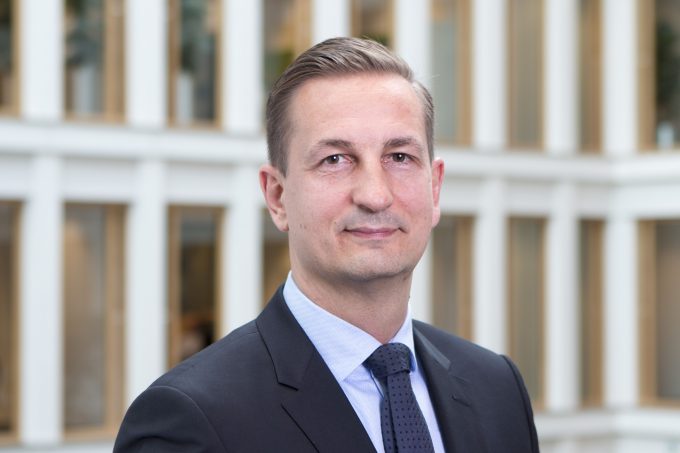APM Terminals – a little gem hiding in plain sight
A ‘blankety blank’ cheque book and pen…

The direction of APM Terminals’ move into hinterland container logistics services became clearer this week, after it announced plans to invest in warehouse facilities to serve shippers and freight forwarders.
The company has a vision of becoming a port services integrator and, on the sidelines of this week’s TPM conference in Long Beach, chief operating officer Henrik Lundgaard Pedersen said the next phase of its investment programme would be focused on serving its landside customers – shippers whose cargo passes through ...
Asia-USEC shippers to lose 42% capacity in a surge of blanked sailings
USTR fees will lead to 'complete destabilisation' of container shipping alliances
New USTR port fees threaten shipping and global supply chains, says Cosco
Outlook for container shipping 'more uncertain now than at the onset of Covid'
Transpac container service closures mount
DHL Express suspends non-de minimis B2C parcels to US consumers
Zim ordered to pay Samsung $3.7m for 'wrongful' D&D charges
Flexport lawsuit an 'undifferentiated mass of gibberish', claims Freightmate

Comment on this article
gunther ginckels
March 10, 2018 at 3:18 pmThe analysis is correct. The take-over of Sealand in 1999 doubled the number of terminals being part of the “Line” not handling competition showing an average asset utilisation of less than 40% and no view on the financial performance of each individual terminal. APM Terminals as an independent was born. The history of DAMCO (MCCC, Maersk Logistics etc…) is different where the “Line” people always considered this a “Forwarders” activity with little affection. Placing these activities in the market was at the time a necessary move resulting however in a widening gap between internal expectations and deliverables. Handing over “Land Based Activities” to APM Terminals was than a mistake as they had no clue what to do with it and started – under pressure of bottom line targets – selling-out inland terminals, railway companies and haulage units. Re-consolidating these 3 business activities is now the next necessary move and long due. It will cost but they do have the cash in the draws ready to be used. Key to this is the ICT platform where Maersk is partnering with Microsoft and IBM. That is a very strong alliance. With Dries van Dongen’s background from P&O-Nedlloyd, DAMCO, Maersk Line and APM Terminals and subject to boarding the right team, this can only go the right way. Success.
Budha Majumdar
March 10, 2018 at 6:55 pmI am really at a loss as to why gateway terminal operators feel ‘shy’ to speak to BCOs in their hinterland area.
Some feel the need to get permission from the shipping line first?
Why?
Are these gateway terminal operators not themselves providing services to the cargo owners in the country where they are domiciled?
Sometimes charging storage and other fees?
Are they not the terminal’s customers?
Do these terminal operators not work hard at ensuring that the goods pass through the port/terminal as safely, swiftly and efficiently as possible, on behalf of the cargo owner?
Have they not read the recent articles by Drewry and Ince &Co warning them of upheavals around the corner and urging terminal operators to get to know and get close to the cargo owning customers and ensure that they are being provided with the right services they need.
Have they not read Martin Christopher’s articles on supply chain competition trumping port competition.
Do they need reminding that in order to retain competitive advantage, terminals need to ensure they remain an integral part of the most successful supply chain.
And who determines the most cost-effective and efficient supply chain?
Why, it is the cargo owner !!
So, why would you not get to know them and of their needs ?
gunther ginckels
March 11, 2018 at 3:31 pmAsk yourself: “who pays the bills of the Terminals”? Right, the shipping lines. And shipping lines traditionally assume the position for their customers – even to an extend that on the landside they accept MICH (Merchant Inspired Carriers Haulage). And what does that mean? The shipping line is paying for the landtransport and delivery while the merchant imposes the transport company and pay for the one-way inland delivery. That does not mean that your questions are not the right ones to ask. You ask all the right questions and I fully agree and for years attempt to persuade terminals to take control over the flows through a.o. extended gate concept and by offering rail and barge services linking inland terminals with ocean terminals. Imagine the efficiency gains when port container terminals take control from ships stow till door delivered and v.v.? This can reduce cost of port facilities, tailor flows to ocean vessel calls and improve facility management.